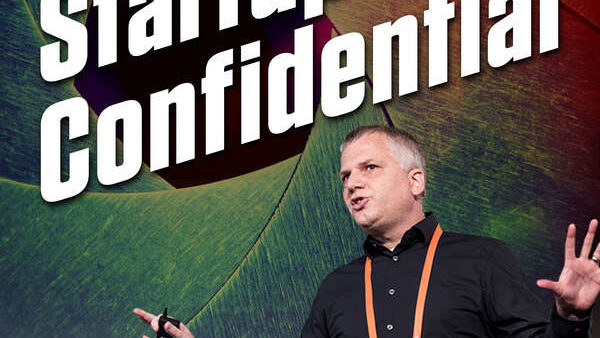PODCASTS / E89

Episode 89 – Boba Tea – Trend or Fad?
MARCH 1, 2023
I do not drink Boba Tea. I don’t even like it, really. I have known about it for years, though, because boba shops started appearing in Seattle and Los Angeles within Taiwanese expat communities in the 1990s. Seattle even has three Taiwanese boba tea chain outlets and over 100 boba tea locations. The first boba ‘outlet’ appeared in the International District, including one inside the famous Asian grocery store – Uwajamaiya.
It’s a Boba revolution on the West Coast, folks, especially if you are under the age of 40. Exponential growth in Google searches for “boba” suggest we are on the upswing of an acceleration in growth in this new category.
But is this a long-term trend? A new drink category in formation? Or just a case of severe pandemic boredom?
It wasn’t until recently that bubble tea actually crossed the racial boundary between Asians and the rest of America, well, at least until it reached non-Asians as any other than a West Coast Asian tourism drink. Yes visiting Chinatown in San Francisco, Seattle and LA has been a white tourist thing for decades. I even did it as a kid in the 1970s.
For example, Boba tea shops spread early beyond Asian neighborhoods to university campus districts such as the U District in Seattle. The U District in Seattle has 20, no I’m not lying, 20 separate boba tea shops today. A bunch of them are Taiwanese chain locations, not just Taiwanese owned.
Say Boba what?
The University District in Seattle is having its second annual Bubble Tea fest this April. OMG. This is how you build category awareness beyond Asian-Americans and immigrants specifically. And, in 2021 – Boba Up – First Self-Serve Boba Stand where you can personalize your Boba drink like a frozen yogurt cup. Thank God! I hate when the brand decides for me what it should be.
If you don’t live in Seattle, don’t feel left out. National Bubble Tea Day is April 23. I’m sure LA is doing something fun for all you Tapioca Milk Tea junkies.
What is so attractive about bubble tea to Americans (of all backgrounds?)
- It’s full of sugar
- As a milk-laced tea plays off of America’s latte/mocha obsession
- It integrates the cool personalized toppings bar element of frozen yogurt chains like Menchies
- It’s a cold energy drink like cold brew
- It has less caffeine, perhaps, overall?
- It’s fun to say! In Taiwanese or English
One of the interesting things about the recent explosion in Boba Tea is that is appears to really have accelerated during the pandemic. In fact, a measurable %, maybe as many as half of Seattle’s current boba shops appeared in the last two years alone!
Did everyone get the same Boba piece in their newsfeed in 2020?
Signs that this is not just a Asian-curiosity beverage trend.
- Boba Tea has multiple bridges to mainstream beverage experiences in America (the latte, cold brew, the froyo toppings thing, sugary summer beverages in general)
- Asiophilic trends are spreading fast across American food culture among Millennials and Gen Z who have more contact with Asian-Americans at college than
- Educate young Americans tend to have Asian friends from college or post-graduate life in major West Coast cities
- It packs more sensory delight than a boring cold brew or nitro coffee on a hot summer day
Signs that Boba tea may peter out
- Boba is super unhealthy; this limits its reach into the 30 and over set. It is a sugar bomb basically. And this is also why young Boba lovers may age out of it- unless some vastly healthier versions appear.
- The most cracked out Boba fans are teen-agers and middle-schoolers. This is NOT an expandable market. And kids often age right out of these life-stage sugar beverages, unless Boba Tea can use bottled brands to contain the original demographic bubble at the bubble tea shop. Which is definitely possible as the early Boba lovers get older.
- I think the era has passed for another frappuccino-like sugar bomb category to scale into the billions in the packaged beverage world. Could packaged Boba tea become a $500M category? Yes. To become a billion-dollar beverage category, though, it would need to transform a lot from the Boba tea shop formulations which sell seasonally like ice cream, not go-to beverages.
I’ve counted at least seven Boba tea brands in the packaged beverage world. Most are experimenting with higher end Boba bottled in glass for upmarket, educated folks (like the founders). There will obviously be a shake-out as these drinks grow, but I think the space is much better situated than the sad Switchel segment that has gone nowhere in ten years.
Turns out that sweet beats sour in basically any category I can imagine in the North American diet-scape. And, it really does in beverages.
The one problem Switchel had was that its older, sour cousin- kombucha had already stopped growing when it appeared. Even with a probiotic health benefit, sour doesn’t scale well.
At least Boba has no overt health drivers at all. Ironically, that is probably it’s best hope for becoming a steadily growing fixture in the American beverage landscape. But to do so, it needs to find a home in the Walmart end of the market where cheap sugar still sells at massive scale.
Starbucks figured out how to bottle up its frappuccinos in the late 1990s and did very well scaling this into a $1B+ business line. But it also built the product line before the anti-sugar craze built in America, before obesity paranoia hit the educated classes.
Someone will scale a bottled Boba tea. But it may not become a billion-dollar take-over of the bottled latte/mocha/frappuccino ocean.